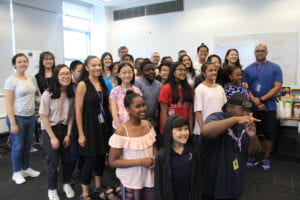 Summer 2018 saw the initial SONYC ieSoSC program, held over 4 weeks through July and August. Organized in conjunction with NYU Tandon Centre for K-12 STEM Education, this was an unbelievable experience during which we introduced 24 middle school students from diverse backgrounds, and three New York public school teachers (who helped us develop and deliver the content), to the research and concerns that underpin and motivate SONYC. In this post we briefly present just a few activities from amongst the many highlights.
Summer 2018 saw the initial SONYC ieSoSC program, held over 4 weeks through July and August. Organized in conjunction with NYU Tandon Centre for K-12 STEM Education, this was an unbelievable experience during which we introduced 24 middle school students from diverse backgrounds, and three New York public school teachers (who helped us develop and deliver the content), to the research and concerns that underpin and motivate SONYC. In this post we briefly present just a few activities from amongst the many highlights.
Soundwalk and mapping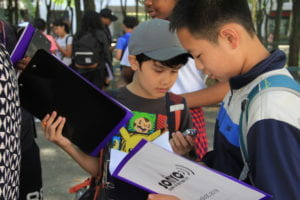
The students who took part in the SONYC ieSoSC program are all city kids, growing up in New York and living every day with a constant background of construction sites, traffic, sirens, etc.; exactly the noise that we monitor at SONYC. Yet they may have limited opportunities to stop and attend to the way different places sound. To provide such an opportunity, and highlight particular issues of concern, we held a soundwalk through downtown Brooklyn, NY, visiting three differing locations to make a record of what we could hear. We started out near a large construction site at a busy intersection, with the sounds of trucks and drills, sirens and jackhammers; and ended up at the shore of the East River underneath the Manhattan Bridge, with trains running overhead and helicopters flying across the river; having also stopped at a quieter park along the way. In each location, students made a log of sounds associated with NYC’s noise code, captured their impressions of the sound environment in sketches, and made digital audio recordings. When we returned to the NYU campus, the students began the task of interpreting their different recordings and experiences. To help with this, we made large-scale maps and students used LEGOs to visualize the sounds they had heard.
Building noise monitoring sensors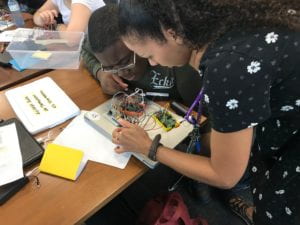
To learn more about the sensor technology that we use to capture noise data in the SONYC project, students built sensors of their own. We used Arduino and Raspberry Pi computing platforms, and mems microphones, to capture Sound Pressure Level (SPL) data; and a variety of LED units to display values or images that reflect the sound input. Having put together and programmed their sensors, and calibrated them against a professional sound level meter, students were able to take them out into the local area to take measurements.
DEP visit and acting out scenarios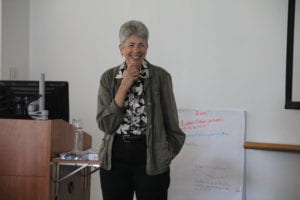
We were extremely fortunate to have the New York City Department of Environmental Protection’s Air, Noise Policy and Enforcement Director, Gerry Kelpin come and speak to the SONYC ieSoSC students about the DEP’s work and the City’s noise code. Following her visit, students worked in groups to act out short scenarios exploring the civic aspects of noise pollution, how it can be reported, and what the city authorities can do in response.
Expo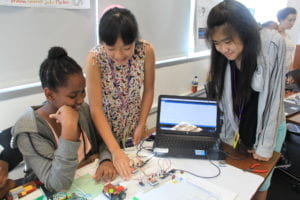
At the end of the program, we held an expo for family, friends, and NYU staff and faculty. Here the SONYC ieSoSC students showed the projects they had built to demonstrate what they had learned and done in the preceding weeks.
Understanding the science of sound
Students also explored the underlying science associated with sound, through making and using simple examples like string telephones, and by building loud speakers from paper plates and other everyday articles.
